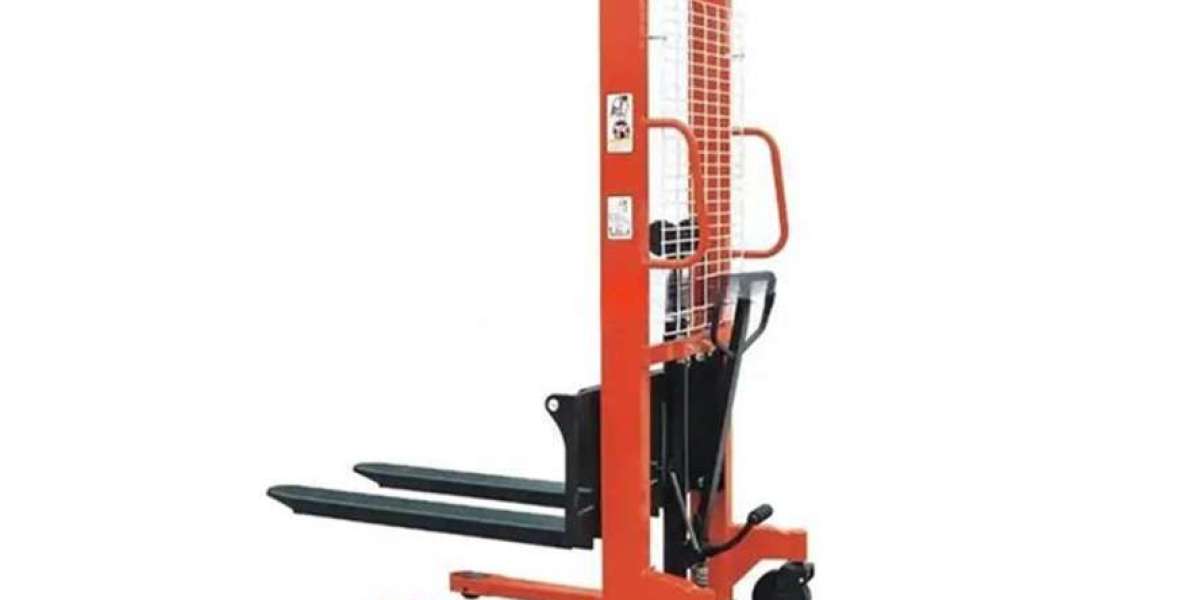Lifting Made Simple: The Versatility and Value of the Manual Stacker in Material Handling
In the dynamic world of warehouses, logistics centers, retail spaces, and small-scale production environments, efficiency and safety in material handling are critical. While forklifts and electric pallet trucks dominate large-scale operations, many businesses turn to a more economical and versatile solution for smaller, lighter-duty lifting tasks—the Manual Stacker. Compact, easy to operate, and remarkably effective, manual stackers are unsung heroes in the handling of pallets, crates, and materials.
This article explores what a manual stacker is, its features, applications, advantages, safety considerations, and why it remains a popular choice for countless businesses around the world.
What Is a Manual Stacker?
A manual stacker is a type of non-motorized lifting equipment designed to lift, lower, and transport loads, typically on pallets. It combines a hydraulic lifting mechanism with manual push or pull operation to raise loads vertically. These devices are particularly useful in areas where space is limited, or where a powered forklift would be impractical or too expensive.
Manual stackers are often used to:
- Stack pallets
- Load or unload trucks
- Position materials on shelving
- Transport goods short distances
They usually consist of forks similar to those on a forklift, a hydraulic lifting mechanism operated via a foot or hand pump, a mast to guide vertical movement, and wheels for maneuverability.
Types of Manual Stackers
There are several variations of manual stackers, each suited for specific tasks:
- Standard Manual Hydraulic Stacker
- Operates using a hydraulic foot pump to lift loads and a manual release for lowering.
- Manual Winch Stacker
- Uses a crank handle and mechanical winch system to lift loads, offering smoother and more precise elevation.
- Counterbalance Manual Stacker
- Designed without front legs, allowing operation in confined spaces or for handling closed pallets.
- Straddle Leg Manual Stacker
- Equipped with adjustable legs that can straddle pallets, ideal for lifting standard-sized loads.
- Manual Drum and Reel Stackers
- Specialized for handling cylindrical items like drums or coils.
Key Features of Manual Stackers
Manual stackers may be simple in design, but they offer a wide range of useful features:
- Hydraulic or Mechanical Lifting
- Manual stackers generally use either a hydraulic pump system or a winch mechanism for vertical lift.
- Adjustable Fork Width
- Many models allow fork spacing to be adjusted to accommodate different pallet sizes.
- Durable Construction
- Built with high-strength steel for reliability and long service life.
- Compact Size
- Ideal for small warehouses or tight aisles where larger equipment cannot operate.
- Low Maintenance
- Fewer electronic or motorized parts mean lower maintenance costs and simpler upkeep.
- Load Capacity Range
- Typically supports loads from 500 kg (1,100 lbs) to 2,000 kg (4,400 lbs), depending on the model.
Benefits of Using a Manual Stacker
1. Affordability
Compared to powered equipment like forklifts, manual stackers are far more economical. With lower upfront costs and minimal maintenance, they provide an excellent return on investment for small businesses.
2. Ease of Use
With basic training, almost any warehouse or floor worker can operate a manual stacker. The controls are intuitive, and the lifting mechanism requires minimal effort.
3. Compact and Maneuverable
Manual stackers are much smaller and lighter than forklifts, making them easier to navigate through narrow aisles or congested workspaces.
4. No Fuel or Power Required
Manual stackers operate without electricity or fuel, making them environmentally friendly and ideal for facilities without charging stations or where electrical safety is a concern.
5. Versatility
From lifting pallets to placing goods on shelves, manual stackers perform a variety of tasks in different industries—manufacturing, warehousing, printing, food processing, and retail.
Common Applications
Manual stackers are widely used in industries where moderate lifting is required:
- Warehouses: For organizing goods, stacking pallets, and loading small delivery trucks.
- Retail Stores: To move merchandise in stockrooms or on sales floors.
- Manufacturing Units: Handling raw materials or finished goods between workstations.
- Workshops: Transporting heavy tools or parts.
- Printing and Publishing: Moving paper rolls, printed material, or packaging supplies.
Safety Considerations
Although manual stackers are simple and safe when used correctly, proper training and usage are essential to avoid accidents:
- Never Exceed Load Limits: Each stacker has a rated capacity. Overloading can lead to tipping or mechanical failure.
- Check Surfaces: Use only on smooth, level surfaces to avoid instability during operation.
- Secure Loads: Ensure the load is centered and stable before lifting.
- Use Proper Posture: When operating the pump or pulling the unit, use proper body mechanics to avoid strain.
- Inspect Regularly: Check for wear on wheels, forks, and lifting mechanisms. Address any issues before use.
Tips for Choosing the Right Manual Stacker
Before purchasing or deploying a manual stacker, consider the following:
- Load Weight and Size
- Know the typical load dimensions and weights to select a stacker with the right capacity and fork width.
- Lift Height Requirements
- Determine the maximum elevation needed for shelving or stacking tasks.
- Work Environment
- Consider floor conditions, aisle width, and pallet types used in your facility.
- Frequency of Use
- For frequent, repetitive lifting, a semi-electric or fully powered stacker might be more appropriate, while occasional use justifies a manual version.
The Sustainable Choice
In an age where sustainability and cost-consciousness are key business drivers, manual stackers offer an excellent blend of environmental friendliness and operational efficiency. They generate zero emissions, produce no noise pollution, and require no energy source beyond human effort—making them perfect for indoor use and green operations.
Conclusion
The manual stacker may not boast the power or speed of its electric counterparts, but it holds its own in reliability, simplicity, and value. For small businesses, warehouses, and tight-space operations, it represents an intelligent solution for everyday lifting and stacking needs.
By embracing manual stackers, organizations can streamline workflows, ensure safety, and minimize overhead—proving that sometimes, the simplest tools are the most effective. Whether you're lifting pallets or organizing storage, a manual stacker is a dependable partner that truly lifts your productivity. Click here to view more details https://www.newvisionmach.com/



